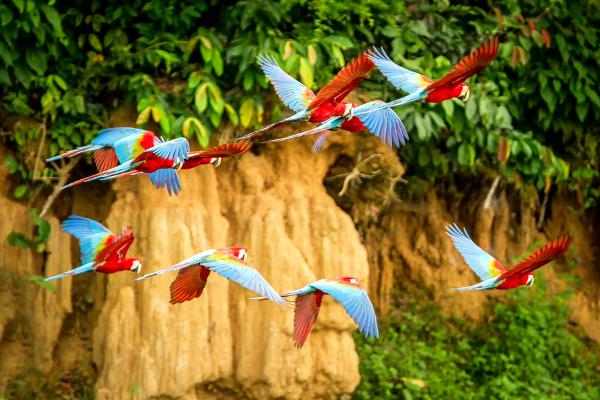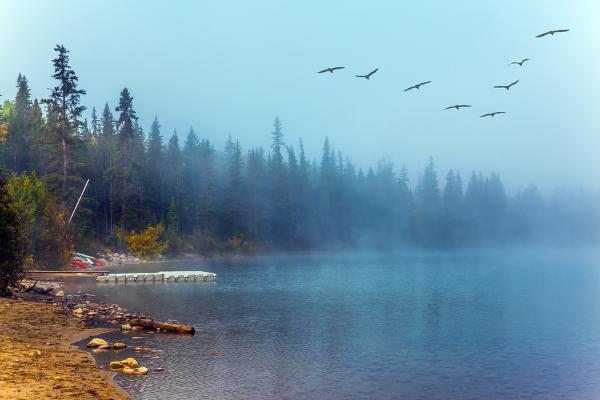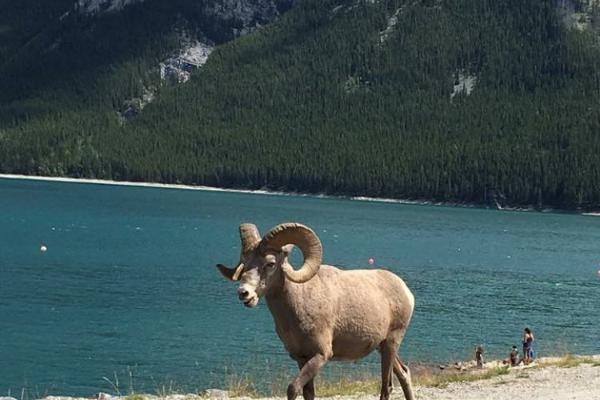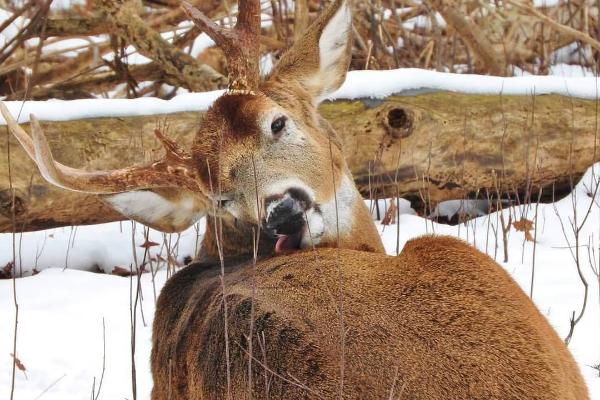Rocky Mountains, or the Rockies, are a major mountain range in western North America, stretching from western Canada to the southwest of the USA. They are surrounded by horizons of craggy mountain peaks, crystal clear lakes, and wide alpine meadows.

Rocky Mountain National Park has over 250 types of birds and mammal species: there's an always a good chance that you'll spot something between the woods of pines and boulders, and see a broad-antlered moose drink from an alpine stream.

Walking through the park's 200 miles of trails, you can see a majestic elk, a brawny bighorn sheep, or a gangly-footed moose. If you enter further into the backcountry, you may have to run into isolated predators like black bear and mountain lion. With every step, you will notice more and more charming little critters, such as the bumbling-fur-ball marmots or the slinky pikas: the park's alpine tundra is their home. Above the lakes and rivers, birder's paradise can be found. American dippers or swift white-tailed ptarmigans can be seen if lucky, with the view of a bald eagle that soars overhead.
There are now about 300 bighorn sheep in the area. During the time of late spring and summer, one can see them around Sheep Lakes and Horseshoe Park. To watch them in their alpine environment, head up to Milner Pass to the Crater or scan the horizon along the Trailridge Road.

Rocky Mountain National Park's moose, the biggest member of the deer family, are undoubtedly magnificent with their antlers that can spread over 5 feet. There was never a permanent moose population in the park until the late 1970s, when the division of wildlife transferred two groups here. Now moose sightings have become a daily thing.
Other large park herbivores are the mule deer and white-tailed deer. Sorry, no bison can be found here, but one can head south from the place to spot herds near Buffalo Bill's grave.

This area actually lacks large populations of top-of-the-food-chain predators. There are no wolves, but there is a large population of mountain lions and a few bobcats. Also cougars, or pumas are found in here, known as one of North America's largest cats. Sightings are rare here, but if you are lucky and head out around dusk or dawn, you might catch a glimpse of a daring, sleek feline.
One is more likely to spot coyote and fox in here, or a black bear or two. Male black bear can grow up to 400 pounds, whereas females get up to around 200 pounds here. They don't like us humans and prefer to stay in the deep backcountry, where they can hunt small animals and look for plants, consuming up to 25,000 calories a day as they like to prepare for a long winter's slumber.
You can certainly spot chipmunks and squirrels. Also, one can see a marmot, badger, and marten. Mink, weasel, raccoon, and snowshoe hare also can be seen near.
Tiger salamanders, toads and frogs and the garter snake are also spotted easily.
 |
 |
 |
 |
Recent Post
Try the new FREE GiveAways Page
Something wrong ? Try refresh this page
Whitelist, remove adblock to see all the secrets. Once done, hit refresh button below.
 |
 |
 |
 |